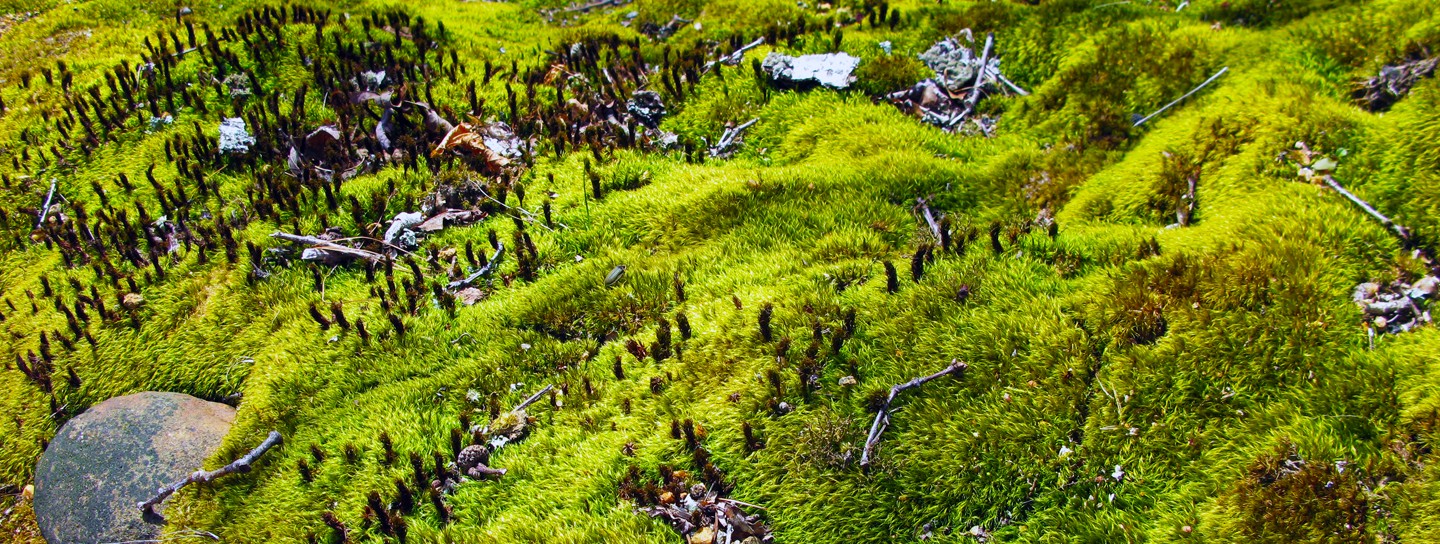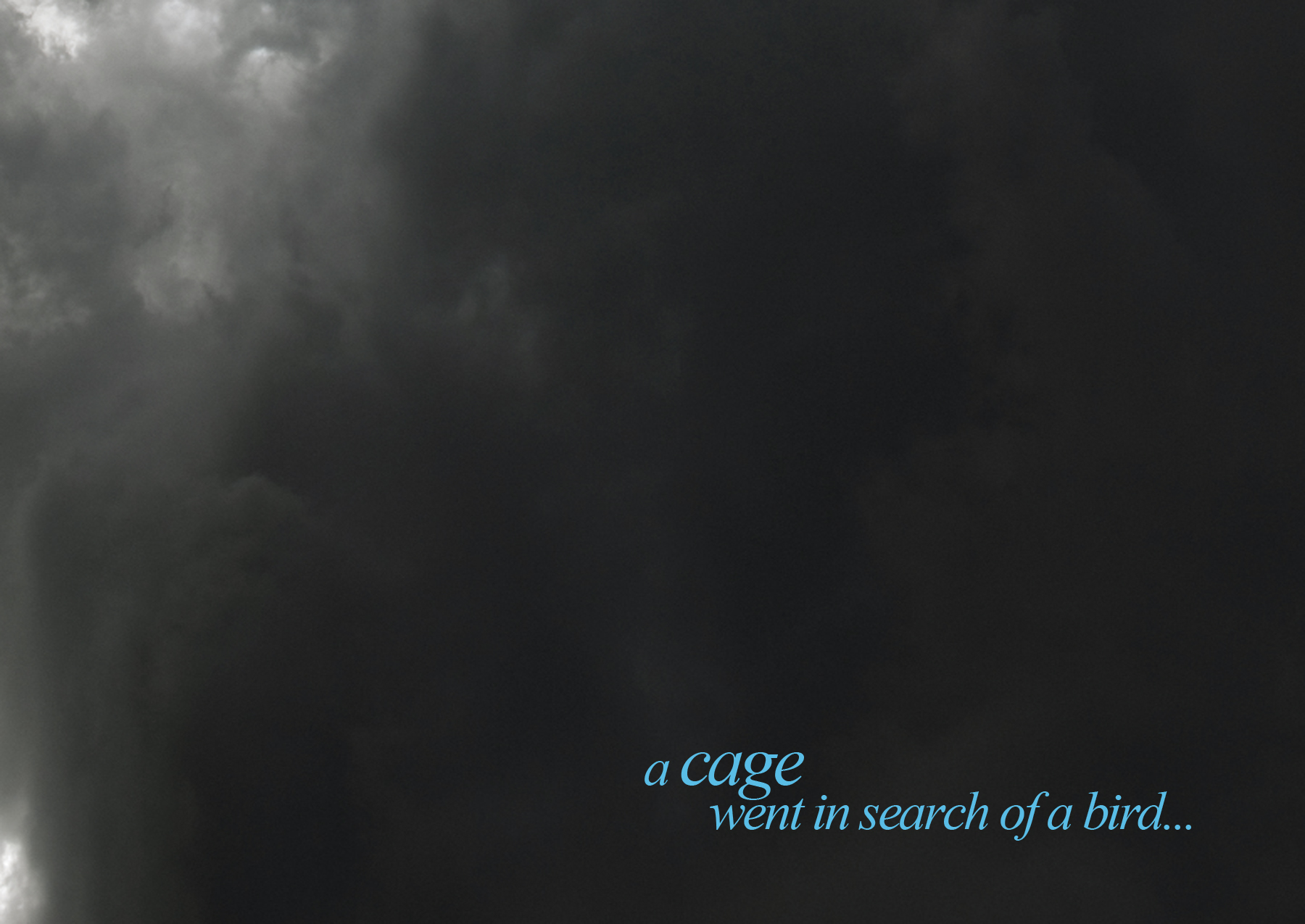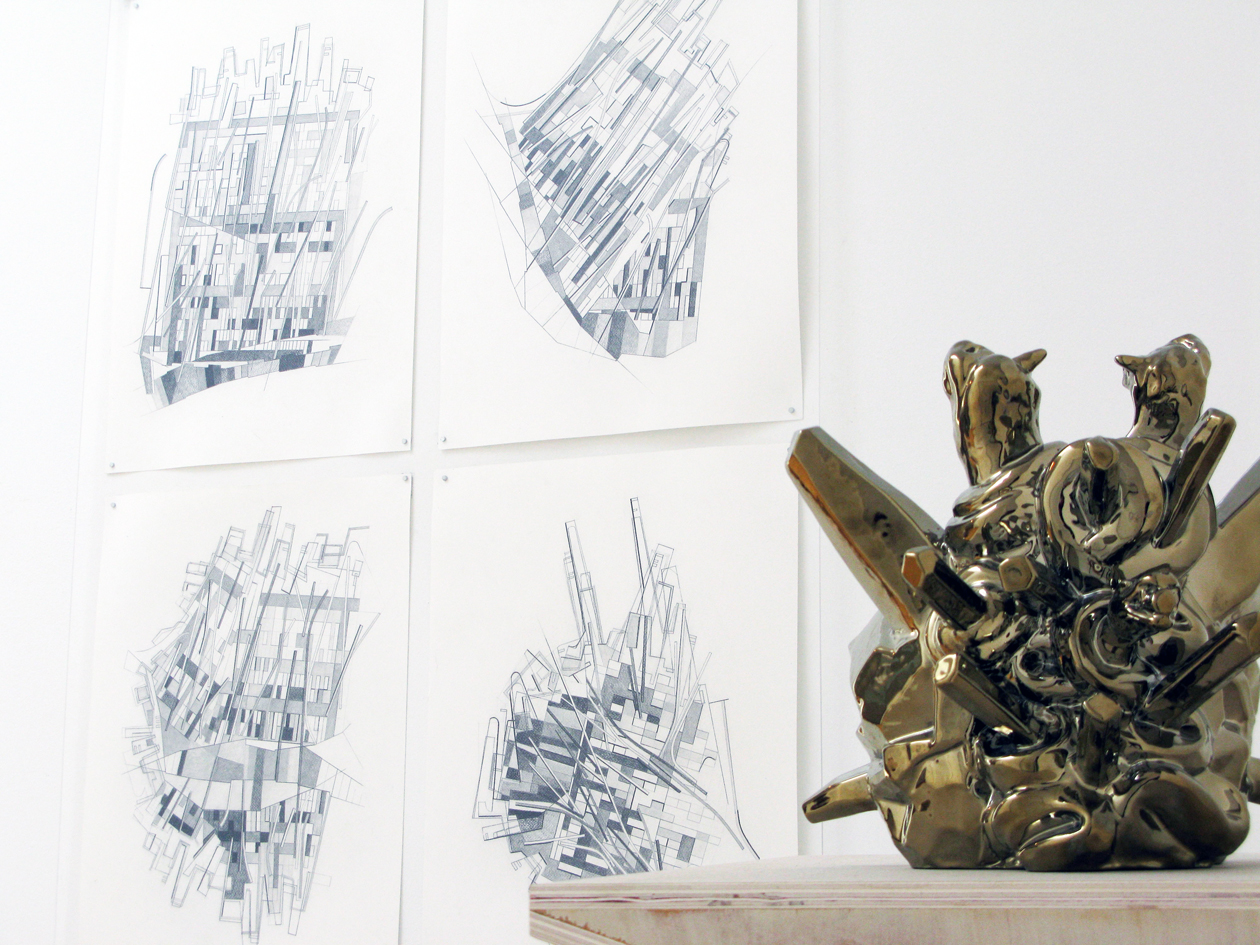a cage went in search of a bird
– Franz Kafka
Radiator Arts, May 10 – June 19
Curated by Sarah Walko
Artists: Eve Bailey, Rachel Bernstein, Ryan V. Brennen, Diana Heise, Roxanne Jackson , Coralina Meyer, Sono Osato, Malingering Uvula (Camilla Ha and Michael Merck), Gabriela Vainsencher
Alchemy
Alchemy is a philosophical tradition from antiquity with a vast history and a symphonic scope of symbols. To some, it is a predecessor to modern chemistry and to others, a spiritual practice verging on pseudo-science. Regardless, its experiments combine science, nature and the philosophical and psychological investigation and externalization of self. One goal of the alchemist therefore, is not just material transformation but personal transmutation.
Like many forms of art, alchemy asks questions and creates perceptual shifts that can elevate consciousness. It adds code to material. One process called “achieving the philosopher’s stone” is a series of steps that investigate the psyche through the physical/material world in order to gain enlightenment. The result of this transformation in an alchemist is a powerful dismantling of individual and cultural programming. One step in gaining the philosopher’s stone is called the “white flash”, a temporary phase that follows the “blackening” stage. Physically, a white crust or dusty layer can appear on the black mass inside the flask in the lab as it calcifies when reacting with other substances or white patches like fungal growths floating on the surface can grow as it putrefies. This phase is often shown symbolically by a white swan, an animal at home upon the surface of the water yet feeds off of the dark mud at the bottom of the stream or lake. It serves as a symbol for alchemists of how spiritual purity can be gained from unpromising primal material.
This whitening phase in the process philosophically and metaphorically is the place where an alchemist can have a sense or a prevision of the future. It is a polar swing from out of the blackening in the crucible. The two are inextricably tied as opposites but this phase gives one a premonition of the future. This glimpse, however fragmentary, of a new possibility then can actively transform the alchemists’ perception of the darkness that preceded it, transforming it from something that could make one tremble into a trusting surrender to a darkness that is not to be feared but rather is, primordial. That darkness becomes a pregnant space, and the two together are a symbol of the integration of the spiritual and the material – not towards an end – but planted into a fertile beginning.
Kafka
The exhibition “The City of K. Franz Kafka and Prague” permanently on display at the Kafka Museum was the impetus for this exhibition “a cage went in search of a bird”. Kafka’s relationship with cities through his surreal lens combined with his imagination and within the context of his time brought the simultaneous nightmare/dreamscape of the budding technological age into the realm of the real in his stories, projecting collective super psyches onto his cities. In his own words he thought of our cities as “a dear little mother with claws, endowed with the past more than its presence, protected by its magic, but raises a giant, constantly threatening fist”.
Kafka was witness to new spectacular deaths by machine, and the dulling down of the way we work in masses of faceless factories or bureaucratic systems. He wove questions into his stories about operating within systems devoid of the individual and individual thinking. All of this stirred inside the flask underneath the omnipresence of budding technology of the time; the second industrial revolution that sparked the exponential speed of invention from the latter half of the 19th century until World War I. Kafka wrote about what many have termed “modern man’s cosmic predicament” within cities of that time: alienation, physical dangers, psychological brutality, terrifying quests, dulling down of work. All of these aspects are intermingled in his stories with mystical transformation despite capitalism and industrialization.
The artists in this exhibition are all exploring the context of our time now through a surreal lens. Large cultural and philosophical shifts due to massive environmental and economic challenges and the level of technology we are reaching and working with daily is ushering in new branches of consciousness and new approaches to how we live. The artists, like Kafka did, are addressing our current cosmic predicament in various ways in a similar nightmare/dreamscape; our relationship with nature, our relationship with self within today’s technological tools, and our psychological and spatial relationship to our objects and our stories. All of these aspects and their ways of working address our current mythology, some through precise and logical envisioning and others through alchemical/shamanic ritual and ceremony. They are working within the nightmare/dreamscape now and a vision of the future that lacks the pasts’ patriarchal aesthetic and imagines in a flash inside the flask, the opening up of a future where we within our cities exist with more feminine traits like reception, flow and relatedness. In doing so, their works also include acts of reclamation and healing.
Architects
Artist Coralina Meyer’s film “Toxic Shock Syndrome” and her sculptures “Pipe Bombs” address her prevision in what she titles “City of Today for Feminine Urbanism”. Meyer explains:
Through the fog before Ellis Island, Kafka’s The Stoker hero mistakes Lady Liberty’s torch for a sword, on his emigration to America for his shot-gun wedding. Thereby transfiguring light into violent action, the levity of his vision smokes out translations between class, personal history, and citizenship. These surreal clouds clarify with specular appreciation- the work that remains in rebuilding our national and private identities. A masterplan for survival as an absurd, dystopian historic fiction; The City of Today for Feminine Urbanism begins with demolition clouds from American mythography. Instructions for living in the form of construction documents and performative sculpture will propose intimate scale solutions to urban scale problems. Encased in the spread-eagle suitcases are a series of IUD/IED (Intra Uterine Device/Improvised Explosive Devices) with building tampons as detonation fodder. To make sense of the 3rd nature present, we must look to our traumatic public memory with hopeful cynicism and digitally reclaim the voids of art history and sagging infrastructure.
Eve Bailey constructs fixed rules that guide her experimentation and free her unconscious in the process of making her cartographic and anatomical drawings. As she does so, she finds herself in Kafkaesque territories more elaborate than she would have consciously conceived of, uncovering more layers of the labyrinthine complexity of both the body and the structure of cities the deeper she delves. As an alchemist would, she takes her own body as a point of departure. The lines represent the bones, muscles and organs intertwining thus creating a framework. Each architectural pattern is carefully chosen for its geometric qualities and its relevance. The series mixes the visceral, metaphorically and the intellectual with systems of representation; blueprints and geometry. The drawing creates a bridge between the physicality of the body and a very interior world with the relentless activity of the mind within an exterior urban landscape. In her own words “It’s my way of trying to heal from the insanity of the scattered world around us, from the ambient disparity between the natural world and the constructed world.”
Diana Heise’s work has always focused on uses of the body to process trauma and reclaim marginalized or abandoned public spaces. In this series of photographs she explained, “I started thinking about kissing. Intimate though not always sexual, making points of connection, lips to cheek or mouth, forehead or hand. I thought about the transfer of energy that occurs when kissing, an intermingling that can, at best, heal.” She found neglected and worn objects and spaces to kiss. The transfer remains marked by color, an intermingling that unites her intimately and personally with this state of abandonment and over-use, bringing knowledge of how we heal such states in ourselves and in our lived spaces.
Rachel Bernstein explores our relationship to nature, or rather, how we generally aim to contain nature in urban environments by carving out designated spaces where we allow it to exist. “It is partially a consequence of urbanization and economic development. Still, we cherish nature. We design it.” Her collages investigate the interior of the human body, using photographic images of body builders, with other biological and geological forms, to compile amorphous biomasses. In her own words “I am drawn to this tenuous boundary between the beautiful and the grotesque, as well as the natural and the unnatural” and she opens up and blurs these lines of where we stop and nature begins.
Roxanne Jackson’s writing on her work begin with a quote by Carl Jung:
A gentle and reasonable being can be transformed into a maniac or a savage beast. One is always inclined to lay the blame on external circumstances,
but nothing could explode in us if it had not been there. – Carl Jung
Appropriately, Jung was fascinated with alchemy in the last years of his life. Jackson reappropriates imagery from horror films, particularly the moment of transformation when a human becomes a beast. She explains “This transgressive imagery creates irony and tension in the work, especially when produced from the medium of clay—with its strong historical ties to comfort and beauty. Rooted in traditions of pantheism and superstition, the horror movie depicts a dark side of human nature. Mutated creatures are created in the murky depths of our collective subconscious. These images ride the boundaries between animal and human, instinct and reason, the conscious and the subconscious.” In the works, Chrome Cats, Jackson deconstructs an image of a domestic cat and a snake to depict the internal duality of beauty and beastly rooted in Jungian psychology. Any remnant of representation is further distorted by the mirror-like finish of these works—effectively disfiguring the image of the viewer.
Ryan Brennan’s installations are his processing of navigating through massive daily inundations of imagery. Similar to what the first abstractionists were experiencing in trying to interpret their changing world and Kafka’s relationship with how technology was changing us, Brennan is searching for a new way of seeing as the exponential speed of today’s technology necessitates a mental shift in perception. He is immersed in navigating the new terrain where he is questioning how digital space has a transformative impression on how we think. He investigates notions of pattern, repetition and rhythm and how these relate to the structure of new digital environments. He states:
The rate in which we process imagery is virtually infinite and seemly instantaneous. Pictures generated from all around the world flood our periphery at radical speeds. Information pours in as steady streams spread across a visual buffet style interface. The rapidity of information by it’s nature scales ideas down to their most primary quickly comprehensible notion. Information, images, everything is fragmented, abbreviated to maximize the range of material intake. My prime focus is to develop new ways to consider the collage of imagery.
Malingering Uvula, the collaboration team of artists Michael Merck and Camilla Ha, will be performing “2.5 – Dissolution” on Friday June 7th in the gallery. It is a site and exhibition specific ritualized meal/performance designed to illuminate and confuse, create and destroy, deify and dispel. The guests will participate in, or actively observe, a multi-sensory, intimate dining scenario in which the cycle of life and artistic inspiration are explored referencing cannibalism, self portraiture, and sacrifice. All of their collaborative performance work is a ceremonial experience ranging from absurdity to oddly spiritual and is reminiscent of filmmaker Alejandro Jodorowsky’s term psychomagic.
Gabriela Vainsenchers’ work explores the idea of reorganizing historical narratives so previous accounts of history begin to crumble and fall apart. Her video Reconstruction was made in the winter of 2012, while on a 3-month residency in the port city of Le Havre, France. The video is in French, English and Hebrew, and tells the unbelievable, yet true, story of how Le Havre was destroyed and rebuilt. She wrote a parallel narrative that portrays another, unnamed city, which was selected by raffle and then destroyed by the moon, its dust used to build it anew. She describes how “the two stories converge at the unlikely juncture of the city’s mysterious pebble beach, where the mute witnesses of the city’s trauma live to this day”. (Reconstruction features an original score by composer Daniel Fox.)
Sono Osato’s piece “Silent Language #10” is a part of a her series Silent language. She writes:
I have been insisting that to perceive the space between things; to hear what is silent – is a suspension of faith. Lately, this penumbral whisper has changed in the quality of its tone. No longer stored energy on the verge of release, its tension has receded into longing. It has become a muffled cry, a groping for light and air. It has also become a cavern in my imagination where the distant past and the distant future collapse into an indecipherable accretion of sacred speech.
Her work composed of oil, encaustic, tiny machine parts, rattle snake bones all compressed onto a panel in a strange sedimentary layer of a history of our cities, morphing inside the crucible. She writes of layers of text compressing into shale, and her preoccupation with the embodiment of word in flesh that has become more urgent. “The entrails of our times are Gothic, and at this point, the sounds of silence are not only precious, they are defiant because they cry out.”
To find a form that accommodates the mess, that is the task of the artist now. – Samuel Beckett
Writer Frederick R. Karl who wrote one of the most extensive biographies on Franz Kafka stated, “What’s Kafkaesque, is when you enter a surreal world in which all your control patterns, all your plans, the whole way in which you have configured your own behavior, begins to fall to pieces, when you find yourself against a force that does not lend itself to the way you perceive the world.” And it is commonly discussed that the way Kafka described the city was one of tremendous mystery in literature. All of the artists in this exhibition evoke this sense of the mysterious in a surreal morphing of ourselves as both human and animal in a narrative relationship with our constructed environments within the context of our time. If this is a book, it must be read under the rarest form of the imagination.
They creep, the makers of things yet to be made, clay makers, undoing maps of Mesopotamia. Respelling Babylon. They walk to work each morning through their lungs, bathing in pleural fluid. The bronchioles untangle their hair, the bundles of alveoli sponge their bodies. They climb out through the trachea. The cries are unmappable. They undo shores. Katabetic winds and the voice of the Sphinx supply their words and they waste nothing. They construct pyramids not of stone or glass, but of hair.


